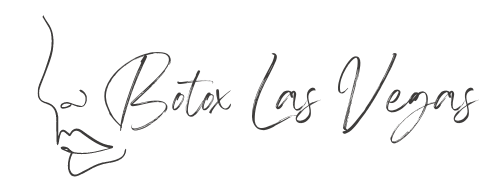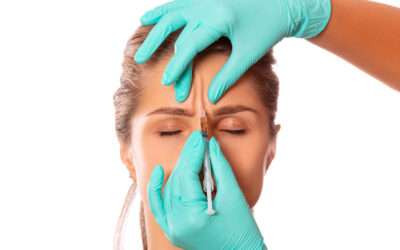Is the prospect of a new wrinkle cream pique your interest? Even though Botox Las Vegas has a wide variety of treatments available, new methods of combating wrinkles are on the horizon.
Millions of individuals all around the world continue to benefit from Botox’s remarkable beauty benefits. In the 1970s and 1980s, Botox was created for use in medicine. Strabismus was the original motivation for its creation. Strabismus occurs when both eyes aren’t focused in the same place, giving the impression that one is turned in or out. Initially invented by Dr. Alan Scott, Botox is used to temporarily weaken one of the eye muscles, causing the affected eye to follow the path of the unaffected eye. In the 1980s, Botox was first used for these purposes after receiving FDA approval.
The origins of botox’s popularity as a beauty treatment.
As expected, more medicinal applications for Botox were identified shortly thereafter. Blepharospasm is a disorder in which the eye muscles of a patient blink involuntary and repeatedly. When this condition reaches a certain stage, it renders patients unable to perform tasks such as reading or driving. In other cases, it might even make it hard to do any kind of job. Many persons who have it suffer a decline in quality of life due to its debilitating physical and psychological impacts. Botox is quite helpful for these folks because it helps relax the muscles around the eyes. Patients who had previously been unable to drive are now allowed to do so. After receiving Botox for reading difficulties, patients report feeling much more at ease while reading.
Around the same time, in the early 1990s, Botox began to be used to treat problems that were similar to those first targeted. Hemifacial Spasm, which causes one side of the face to twitch involuntary, is a disorder that is quite similar to Blepharspasm. Hemifacial spasm patients, including those with blepharspasm, can benefit from Botox because it relaxes their involuntary blinking muscles, allowing them to feel more at ease in social situations.
Soon after, Botox was used to treat other types of so-called Dystonia, in which muscles twitch uncontrollably all throughout the body. This drug may be useful for kids, too. After receiving Botox, several patients with spastic Dystonia who had trouble walking or moving their hands or arms were able to resume normal activity.
History of Botox
Early on in Botox’s use, it became apparent that patients treated for some of these disorders also saw a reduction in wrinkles where the injections were administered. Patients who only had treatment on one side of their face showed the most dramatic improvement. Both the patients and their doctors saw a significant difference in the amount of wrinkles between the treated and untreated sides. With continued pharmaceutical use, the contrast between the treated and untreated sides of these individuals’ bodies grew larger.
In 2003, Allergan, the firm that develops Botox, was granted permission to market the drug for aesthetic purposes. It has been proven via clinical experiments conducted by Allergan that injecting Botox into the glabella (the furrow between the eyebrows) will reduce the appearance of frown lines and enhance one’s overall aesthetic. In 2003, Botox received FDA clearance for this use. Despite the fact that this is the sole approved cosmetic application of Botox, doctors quickly began injecting it into other areas of patients’ faces. The FDA has only given its stamp of approval to what is called “On-label” procedures. However, using a drug that is On-label for one reason but Off-label for another is not only permissible but standard practice among doctors. Similarly, Botox was rapidly adopted for the treatment of frown lines, crow’s feet, and other expression lines caused by repetitive facial expressions. Millions of individuals all around the world have already had Botox for these reasons.
Just what is botox, exactly?
Botox is a protein isolated from Clostridium bacteria that temporarily blocks signals between nerves and muscles. Neurotransmitters are chemical messengers released by nerves and used to instruct muscles to contract. These proteins are secreted by nerves and go to muscles to trigger contractions. Though Botox is injected into a muscle, the protein is absorbed by the nerves that supply that muscle, and even when the nerve tries to deliver the signal to the muscle ordering the muscle to contract, the Botox protein prevents the muscle from contracting. This is never a permanent change, though. After around three months, the protein in Botox will have been metabolized by the nerve, and the signal will have returned to normal.
In the not-too-distant future, Botox will face competition from new drugs intended for cosmetic treatment of facial wrinkles. The drug Dysport (also known as Reloxan) is now undergoing testing in humans in the United States. Like Botox, this drug temporarily interrupts the nerve’s signal to the muscle, causing the tensed, wrinkle-causing muscle to relax. No one knows for sure when the FDA will decide whether or not to approve this drug. It’s worth noting that it’s already being used with the blessing of Europe’s medication regulatory agency.
Although it appears to have a similar duration of action as Botox, it was not made using the same method. In addition, it is unclear if it is less or more painful to insert in a patient’s face muscles because its formulation is somewhat different from Botox. Further, Medicis, the firm that will have the exclusive right to distribute Reloxan in the United States, has not yet disclosed the price at which the drug will be sold. Although it is important to be skeptical of drug developers’ claims about when their products will be approved by the FDA, the developer of Reloxan predicts that the FDA will green-light the drug this summer.
Similar drugs like Botox are now being developed by Botox’s rivals. However, these alternatives to Reloxan may be further behind in clinical trials and take even longer to reach the market. Mertz, a German pharmaceutical business, makes a medication called Xelmin that has some similarities to Botox. Unfortunately, we don’t know the benefits or drawbacks of this medicine in comparison to Botox because of the lack of information on its qualities. Puretox is another product that is now through preliminary to intermediate stages of testing.
Toxin-free Botox treatments are on the horizon
Botox’s distinctive and noticeable effects have been appreciated by patients for a long time. It’s a major step forward because of the technique through which it works to improve appearance and revive the face. Many patients now have a nonsurgical option for enhancing their looks, which has altered their perspective on surgical procedures. In the next few years, these alternatives to Botox will join the market, ushering in a new era of cosmetic augmentation and face rejuvenation. It remains to be seen if they show the same level of safety and efficacy as Botox. In general, both doctors and patients would benefit from more options in the marketplace. It’s hard to imagine how having more options for cosmetic rejuvenation treatments wouldn’t be helpful for patients.
Dr. Daniel Ebroon specializes in oculoplastic surgery, which includes work on the eyelids. Blepharoplasty, or cosmetic eyelid surgery, is a surgical procedure that rejuvenates the appearance of the eyes. Please visit Dr. Ebroon’s websites at http://www.ebroon.com and [http://www.cosmetic-eyelid-surgery.com/] for more information on Cosmetic Eyelid Surgery .com]



0 Comments